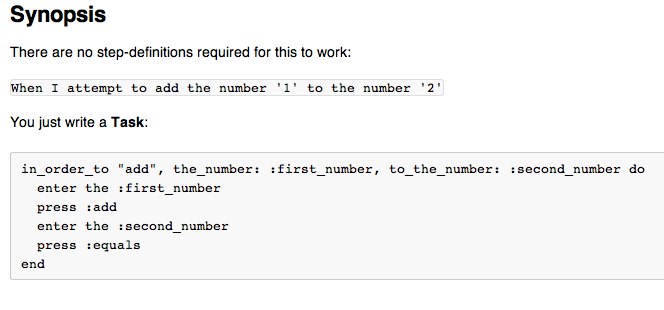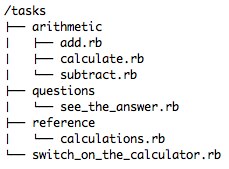A while back I wrote about writing feature specs (acceptance tests) at the right level of abstraction. I explained how we want to pitch our scenarios at the “task” level…
Goal: What we’re trying to achieve which has one or more…
Tasks: The high-level work-item that we complete to fulfil the goal, each having one or more…
Actions: The specific steps or interactions we execute to complete the task.
I showed how many scenarios (acceptance tests) are pitched at too low a level. They’re often at the action level, detailing every field filled in and every button clicked. This is too low-level.
Instead, we want to express the business process… the tasks involved in fulfilling a goal. The actions should be expressed in the code (or step-definitions), not the plain-text scenarios. Pitching the scenarios at the action level makes scenarios much harder to maintain – especially when the user-interface changes. But, perhaps more importantly, they don’t express what’s of interest to the business.
There are other challenges faced by teams using cucumber:
- Over-wordsmithing scenarios
- Limited regular-expression expertise
- Unmaintainably large step-definition files
- Fragmented step-definition files
- Coverage vs. Speed tradeoffs of running scenarios through or below the GUI (respectively)
We’ve taken many of the lessons we’ve learned using BDD tools to address these problems and begun to distill the various heuristics and design ideas (patterns) that emerged into a single open-source extension to cucumber – cukesalad.
Many of the heuristics and design ideas expressed in the project can be used on your existing projects without using cukesalad:
- Treat each step-definition as a class of task. Like other classes, have one file per step-definition and organise them so they’re easy to find. Name each file using the text used in the scenario.
- Abstract the API that drives your application behind something representing the role or type of role involved in the story
- Write scenarios like a narrative for someone in the role relevant to the user-story
- Write the actions within the task (or step-definition) as if they’re instructions on how to complete that task
- And more…
Cukesalad is the ongoing expression of us mercilessly refactoring a ‘typical’ Cucumber project. At the moment, it is more of an illustration of the concepts and ideas… but some are already using it on their day-to-day projects. Check it out… try it out… and let us know what you think.
Go to http://cukesalad.info – for more info, or checkout the talk I gave at CukeUp, hosted at SkillsMatter.
And if you’re wondering why it’s called cukesalad… It’s cucumber, washed and ready to eat.

